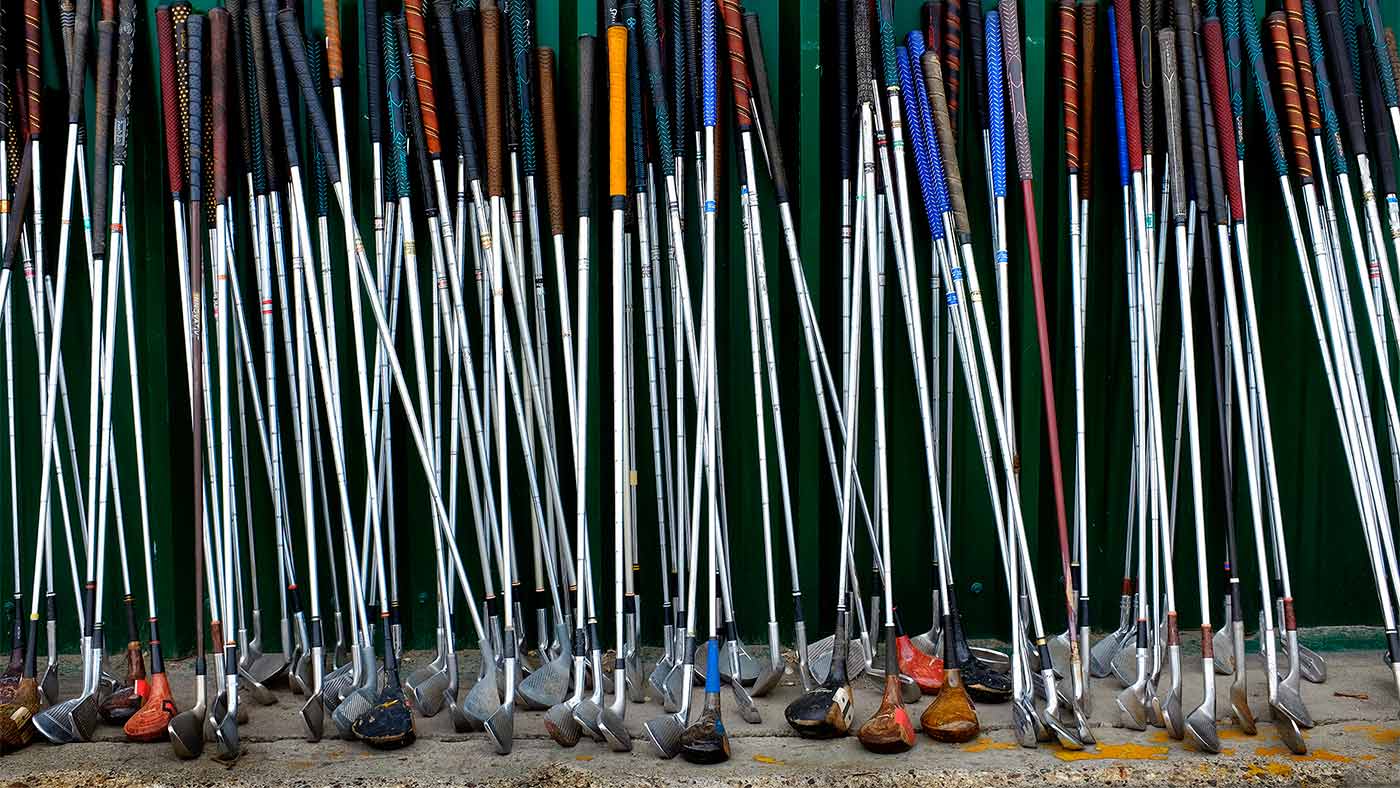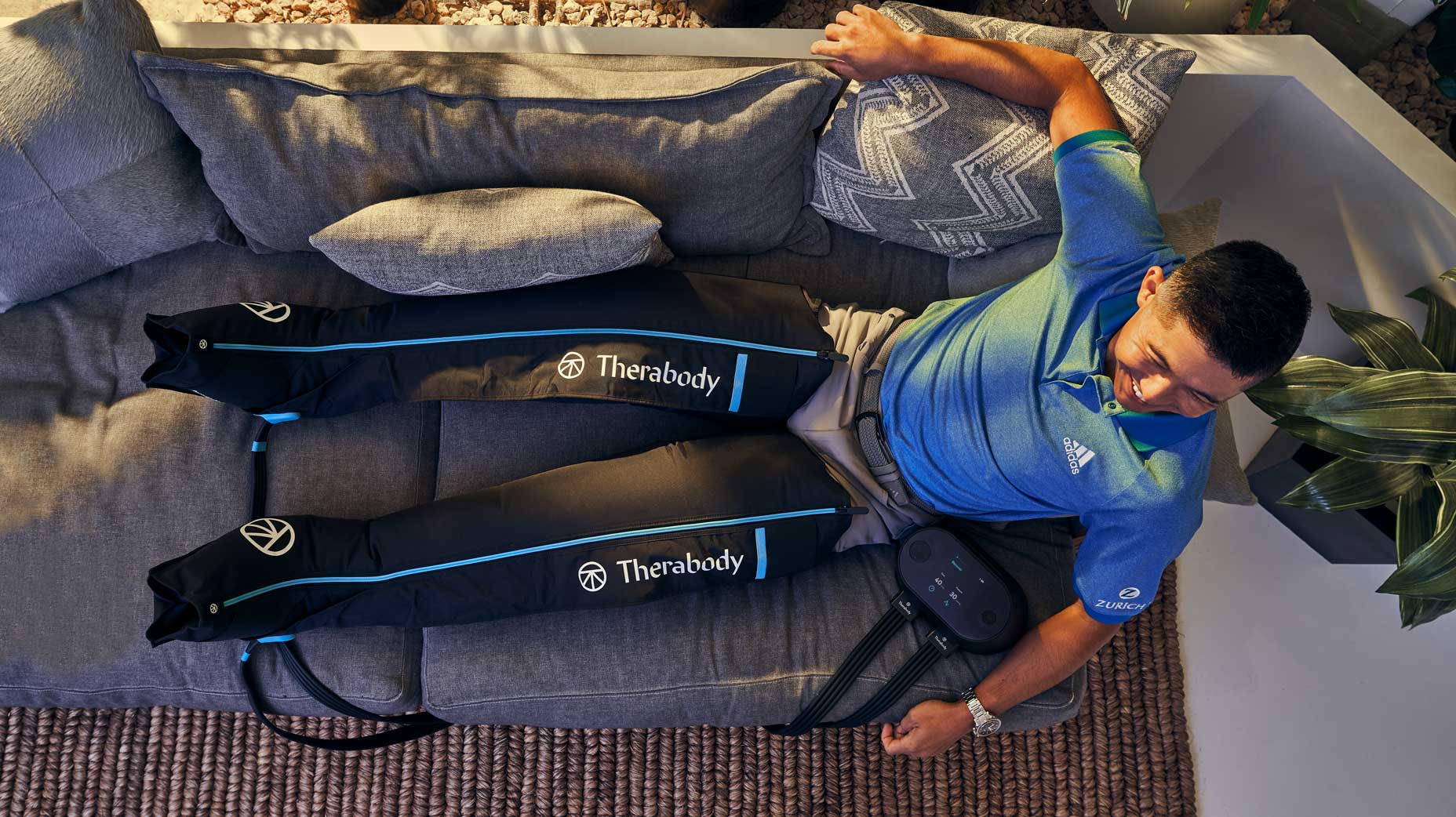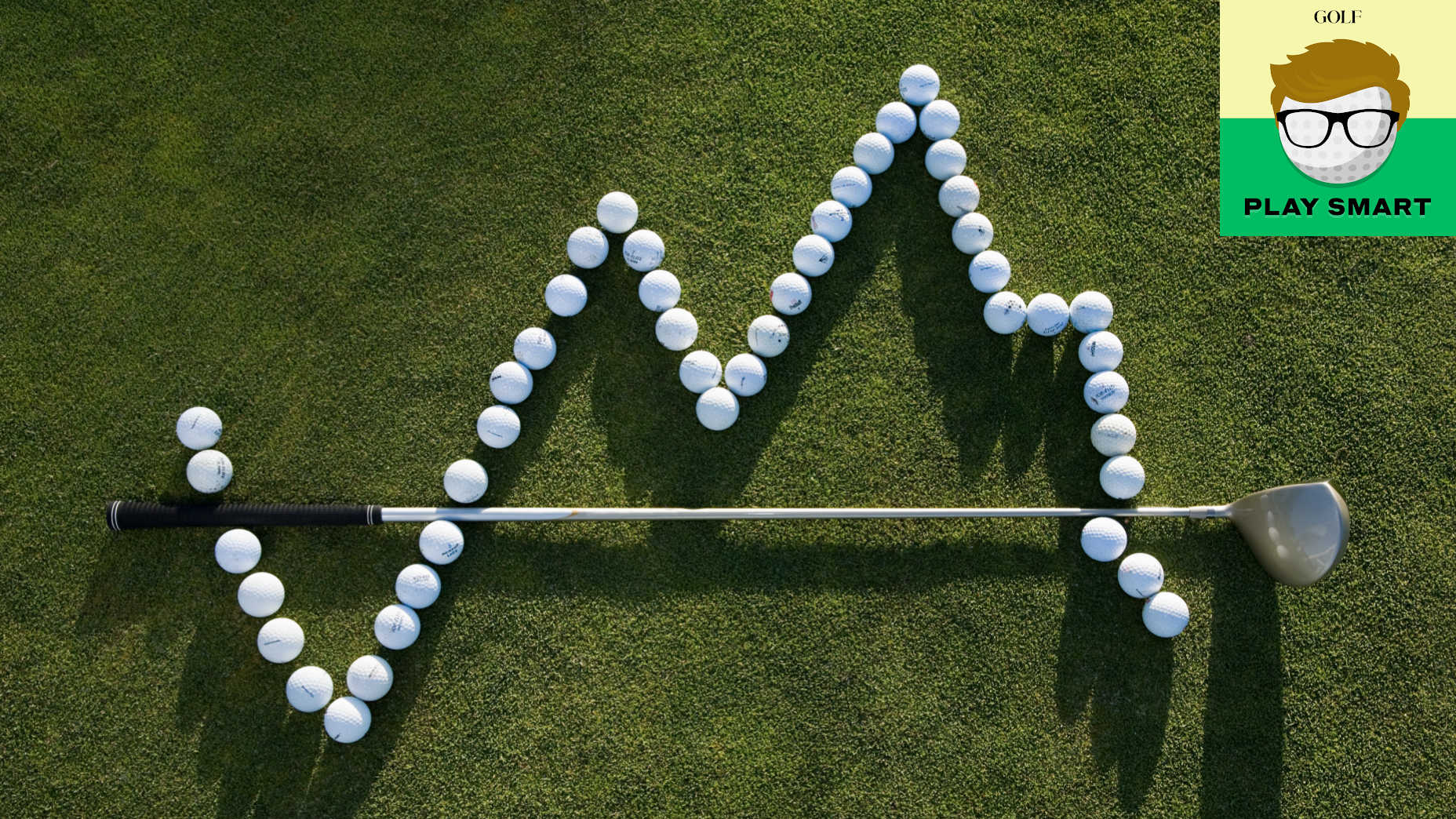
Your equipment could hurt your chances of hitting the green in two different ways.
Getty Images
Welcome to Play Smart, a game-improvement column that drops every Monday, Wednesday and Friday from Game Improvement Editor Luke Kerr-Dineen to help raise your golf IQ and play smarter, better golf.
Back in November, GOLF Magazine hosted the GOLF Top 100 Teachers Summit which, in a nutshell, involves gathering all sorts of smart golf people together to talk about all sorts of smart golf things.
If you’re a purveyor of some of the nerdier content this website puts out, you’ve probably come across some of the interesting nuggets it produced already. But diving through some of the content, I realized I let slip through the cracks what may have been one of the most useful information pieces of information of all.
It comes courtesy, of Tim Briand, the current Director of Business Development of Foresight Sports, who showcased the results of a resent study the company conducted using the same robot testing technology we used for ClubTest. The goal? Trying to isolate the impact clubface and lie angle each have on your ability to hit straight shots.
You can watch the entire presentation on InsideGOLF right here, but as Tim explains:
“We took a 6-iron at ran it at two different speeds,” Briand says, adding that those speeds were 95 and 80 mph. “We made sure the leading edge [of the club] was perfectly zero, and we oriented the club in different ways.”
Specifically, they changed the lie angles various degrees flat and upright, and then started changing around the face angle, then measured the effects.
What did they find?
Why misfit equipment is sabotaging you
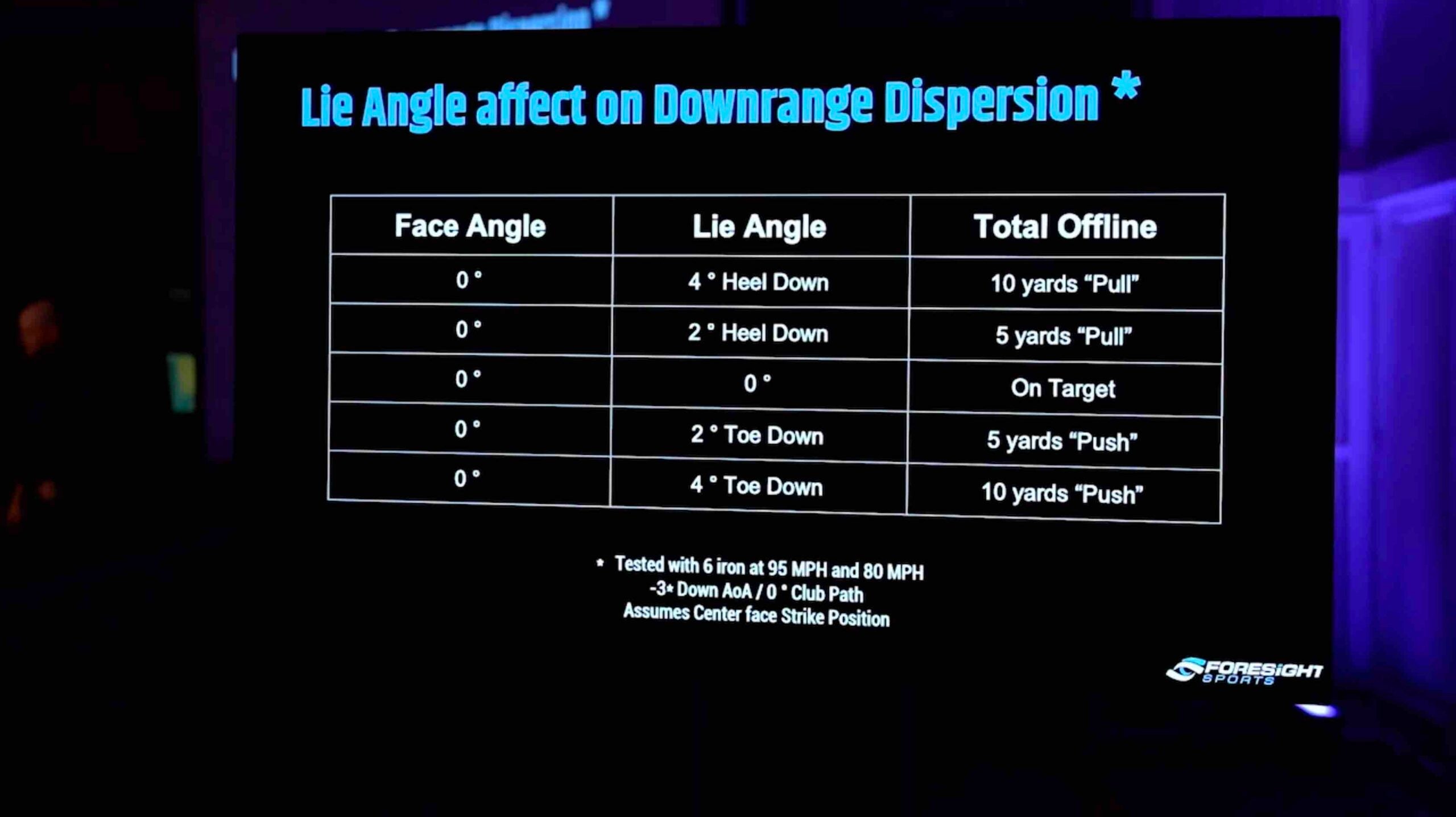
Too upright clubs will go left; clubs too flat will go right.
GOLF.com
First off, that lie angle has a huge impact on your accuracy. If you’re swinging clubs that are too upright for you, the heel is going to dig into the ground first, shut the clubface, and send the ball left. The interesting thing is that it doesn’t even take much to send the ball offline: Even if the face is perfectly square to your target at impact, your ball is going to go about 5 yards offline for every two degrees misfit your clubs are. It doesn’t take much for what should’ve been a dead straight shot to turn into a wayward one.
What should your takeaway be from this? That getting your clubs fit for you is incredibly important (shoutout to our affiliate company True Spec on this). If you don’t think it is, you should probably revise that take, because it’s a pretty bad one.
But wait, there’s more!
Why the clubface is king
Do you ever see an interesting golf swing on television and wonder how they can swing that way? The reason is because, for whatever reason, that golfer is swinging in a way that allows them to square the club up at impact, consistently. If you can do that, it doesn’t matter what your swing looks like. It’s job done.
Which brings us to Tim’s second chart: Now that your clubs are fit perfectly to you, a clubface that’s pointing two degrees left or right will send the ball 10 yards offline in that direction. Nobody’s going to have a perfectly square clubface all the time, but the big problems come when on any given swing, your clubface could be pointing left or right. You could be looking at least a 20 yard circle on a 6-iron, whcih starts getting unmanageably big as you get into your longer clubs.
All of which is to say remember: The clubface rules all, so pay attention to it.
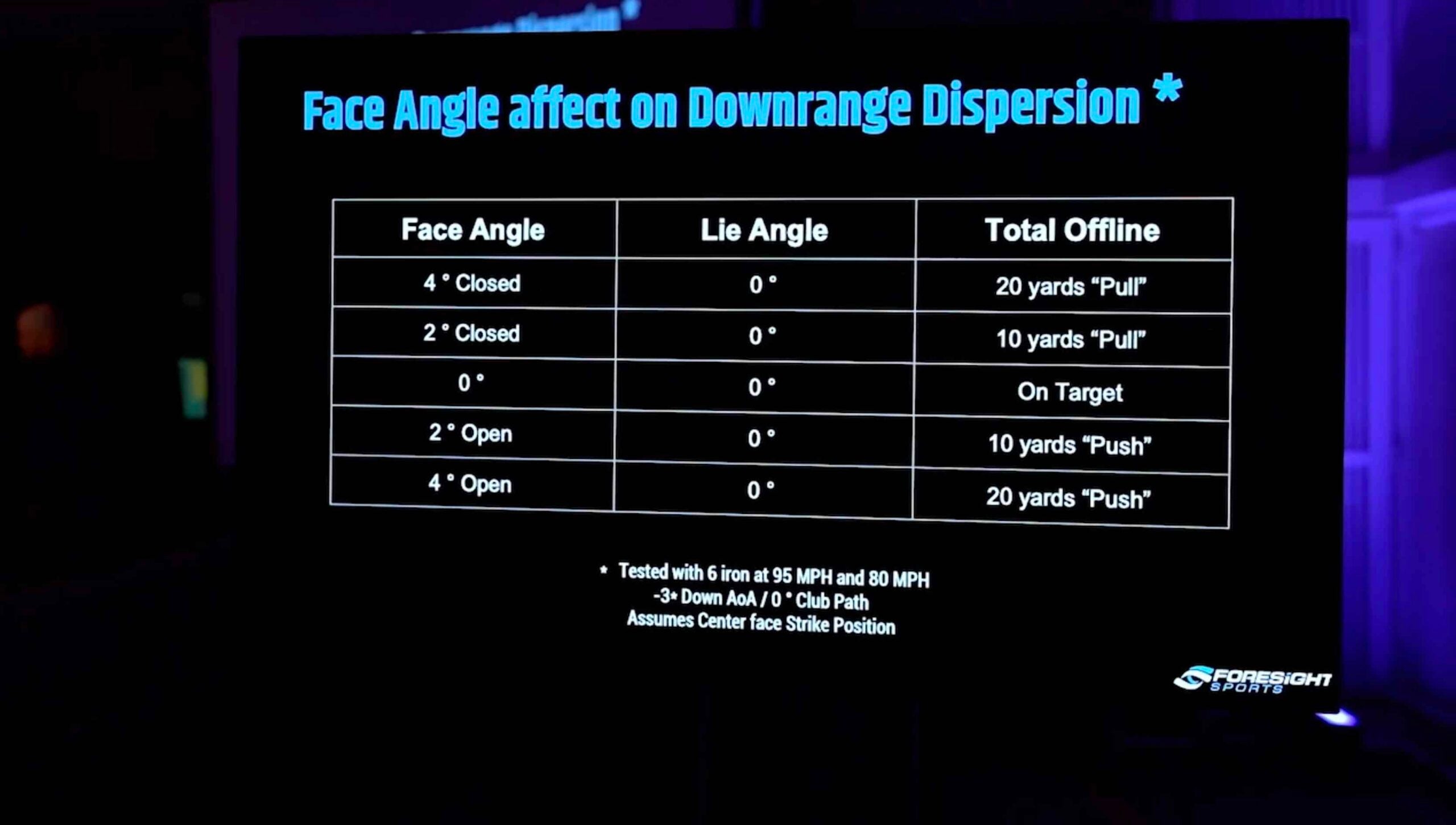
For every two degrees open or closed your clubface is, the ball will go 10 yards offline.
GOLF.com
And of course, it’s when both of these things combine that things can get really messy.
A slightly closed clubface, with clubs that are a little misfit to your swing, could send the ball 30 yards left without you even putting a bad swing on it. Golf’s hard enough as it is, so don’t conjure up missed greens and double bogeys from the stuff you can prevent.


